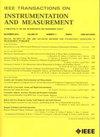用于云计算服务中光端口退化建模的自适应广义时间间隔累积法
IF 5.9
2区 工程技术
Q1 ENGINEERING, ELECTRICAL & ELECTRONIC
IEEE Transactions on Instrumentation and Measurement
Pub Date : 2024-10-16
DOI:10.1109/TIM.2024.3481571
引用次数: 0
摘要
近年来,随着信息技术的飞速发展,人们对计算和存储的需求越来越大,尤其是在云计算领域。光端口已成为云计算服务中不可或缺的硬件,其稳定运行至关重要。对光端口进行剩余使用寿命(RUL)预测可以有效防止事故发生,减少经济损失。现有的剩余使用寿命预测方法大多侧重于连续降解建模,通常需要通过连续降解趋势来描述降解的不确定性,从而实现剩余使用寿命分布和不确定性表征。然而,在一些工业应用中,例如光端口,其降解是离散的,其趋势难以用上述函数来描述。因此,本文旨在开发一种自适应广义时间间隔累积方法,用于离散退化建模和 RUL 预测。在这里,提出的新方法与新定义的 "虚拟跳跃点(VJPs)"相结合,实现了在线自适应模型参数更新。通过对更新后的模型进行外推,最终达到预设的故障阈值,从而实现 RUL 预测。结果表明,所提出的新方法能很好地模拟光端口退化,并提供准确的 RUL 预测,从而有利于实现基于条件的最佳端口更换。从业者须知--光端口是云计算领域的重要硬件之一,其物理特性决定了其退化的离散性。从业人员需要知道如何处理具有离散退化特征的数据。本文提出了一种自适应广义时间间隔累积方法,可实现离散退化数据分布的自适应选择和RUL预测,为设备运维提供有价值的指导。本文通过与现有的连续退化建模方法进行比较,突出了该方法的优越性。本文章由计算机程序翻译,如有差异,请以英文原文为准。
Adaptive Generalized Time Interval Cumulative Methodology for Optical Port Degradation Modeling in Cloud Computing Service
In recent years, the rapid development of information technology has led to an increasing demand for computing and storage, especially in the cloud computing field. Optical ports have become indispensable hardware in cloud computing services, and their stable operation is crucial. Performing remaining useful life (RUL) predictionon optical ports can effectively prevent accidents from occurring and reduce economic losses. Most existing RUL prediction methods focus on continuous degradation modeling, which often requires continuous degradation trending to describe degradation uncertainty so as to achieve RUL distributions and uncertainty characterization. However, in some industrial applications, such as optical ports, their degradation is discrete and their trending is hard to describe by the aforementioned function. Therefore, this article aims to develop an adaptive generalized time interval cumulative methodology for discrete degradation modeling and RUL prediction. Here, the proposed new methodology is integrated with newly defined “virtual jump points (VJPs) to realize online adaptive model parameters updating. RUL prediction is ultimately achieved by extrapolating the updated model to reach a preset failure threshold. The results show that the proposed new methodology can well model optical port degradation and provide accurate RUL prediction so as to be beneficial to realizing condition-based optimal port replacement. Note to Practitioners—Optical ports are one of the important hardware in the field of cloud computing, and their physical characteristics determine their discrete characteristics of degradation. Practitioners need to know how to handle data with discrete degradation features. This article proposes an adaptive generalized time interval accumulation methodology, which can achieve adaptive selection of discrete degradation data distribution and RUL prediction, offering valuable guidance for equipment operation and maintenance. This article highlights the superiority of the method by comparing it with existing continuous degradation modeling methods.
求助全文
通过发布文献求助,成功后即可免费获取论文全文。
去求助
来源期刊

IEEE Transactions on Instrumentation and Measurement
工程技术-工程:电子与电气
CiteScore
9.00
自引率
23.20%
发文量
1294
审稿时长
3.9 months
期刊介绍:
Papers are sought that address innovative solutions to the development and use of electrical and electronic instruments and equipment to measure, monitor and/or record physical phenomena for the purpose of advancing measurement science, methods, functionality and applications. The scope of these papers may encompass: (1) theory, methodology, and practice of measurement; (2) design, development and evaluation of instrumentation and measurement systems and components used in generating, acquiring, conditioning and processing signals; (3) analysis, representation, display, and preservation of the information obtained from a set of measurements; and (4) scientific and technical support to establishment and maintenance of technical standards in the field of Instrumentation and Measurement.
 求助内容:
求助内容: 应助结果提醒方式:
应助结果提醒方式:


